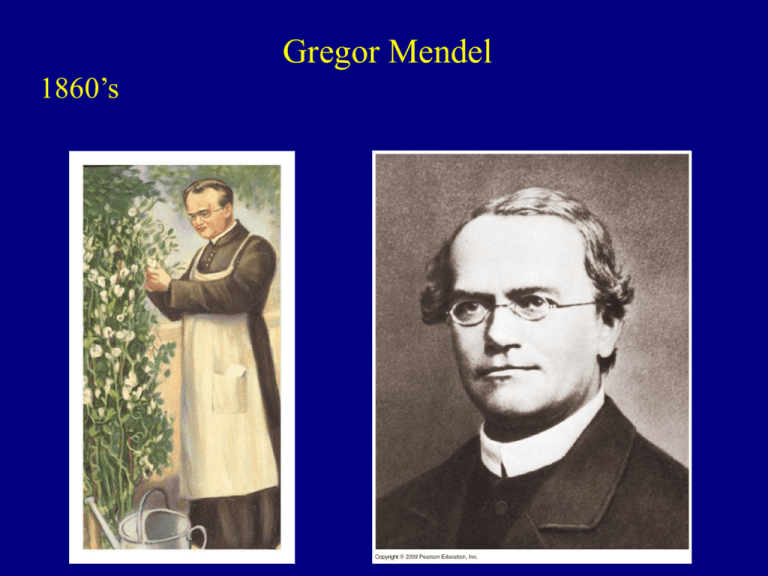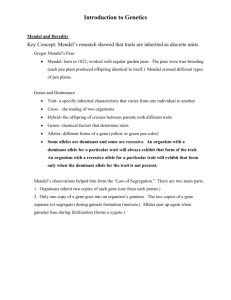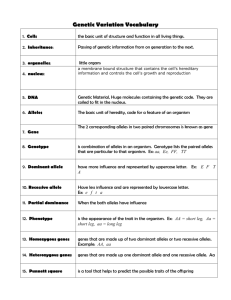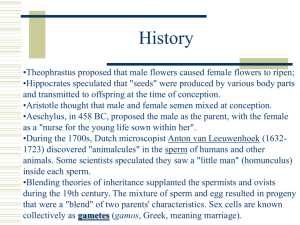Lecture 14
advertisement

Gregor Mendel 1860’s Garden Pea Flower produces both gametes. stamens: male carpel: female Experimental Design Experimental Design 1. Ensure true-breeding varieties. these are the parental (P) generation 2. Cross two varieties. produces the F1 generation (hybrids) Experimental Design 3. Allow F1 plants to self-fertilize a. produces the F2 generation b. Mendel counted F2 Results 1. F1 all looked the same a. purple flowers (no white) b. green pods (no yellow) c. yellow seeds (no green) d. only one of each trait appeared Results 2. This identified the dominant traits. 3. The recessive traits did not appear in F1. Results 4. F2 generation (self-fertilization) a. the recessive traits reappeared b. Mendel counted the results: dominant vs. recessive c. 3:1 ratio Results F3 generation a. all recessives were true-breeders b. only 1/3 dominant F2 plants were true-breeders c. other 2/3 of dominants produced 3:1 ratio Results 5. The F2 genotype was really 1:2:1 1 true-breeding dominant 2 not true-breeding dominant 1 true-breeding recessive Mendel’s Model A. Four hypotheses 1. There are alternative forms of heritable factors (genes) that account for variations in inherited characteristics alleles: alternative forms of a gene (for a trait) 2. For each characteristic, an organism inherits two alleles, one from each parent. These alleles may be the same. a. homozygous: organism has two identical alleles b. heterozygous: organism has two different alleles Mendel’s Model 3. If the alleles of an inherited pair differ, then one determines the organism’s appearance and is called the dominant allele, the other has no noticeable effect on the organism’s appearance and is called the recessive allele. Having a recessive allele does not necessarily mean it will be expressed. Mendel’s Model 4. A sperm or egg carries only one allele for each inherited trait because allele pairs separate (segregate) from each other during Meiosis. This is known as Mendel’s Law of Segregation. Test Cross Mendel’s Law of Independent Assortment Is illustrated by dihybrid crosses: Inheritance of one trait does not influence the inheritance of any other. Not valid for genes on the same chromosome. Genes located on different chromosomes are inherited independently. Multiple Alleles (9.12) Diploid individuals can possess only two alleles at one time (one on each member of a homologous pair). There are almost always more than two alleles for any given trait in the population. More than one can be dominant (codominance) Sex Linkage (9.21) Some genes are carried on sex chromosomes in humans, mostly on X








